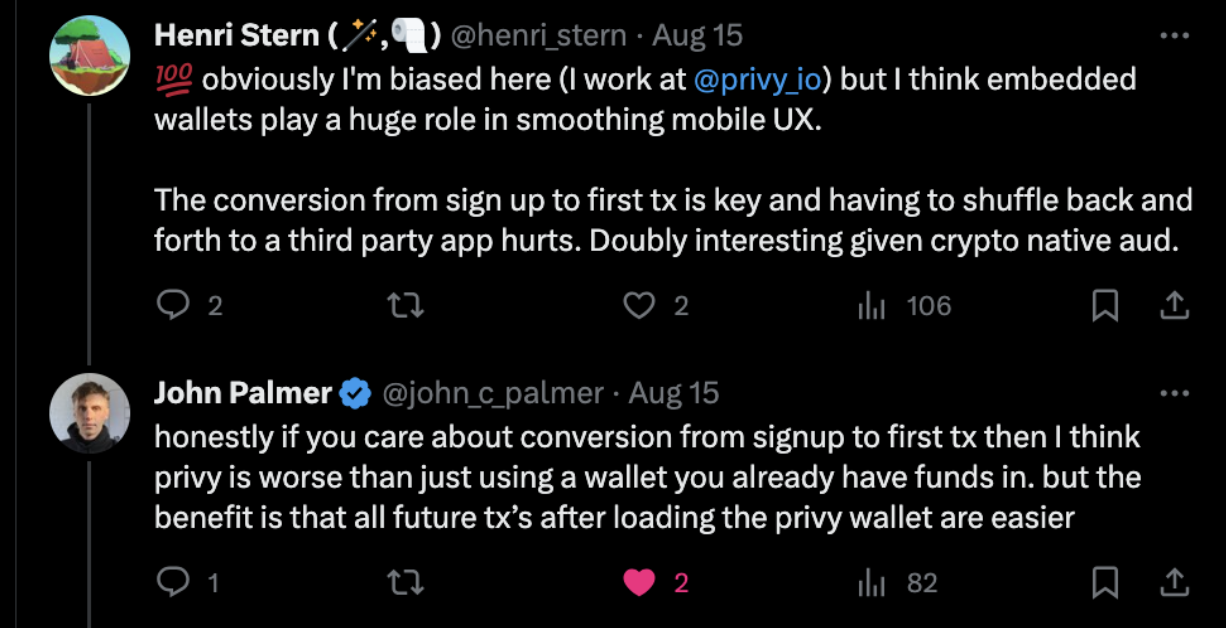Web3's coming of age, part 2: Time to first transaction
Embedded wallets, mobile usage and getting users to their first transaction
Henri Stern
|Nov 10, 2023

At Privy, we build simple tools to help you onboard and engage your users in web3. In this series, we’ll share some thoughts on the evolution of UX in web3 based on our work and that of the customers we serve.
Friction upfront or friction throughout
I have been thinking about this conversation about embedded wallets’ advantages in mobile environments for a while.

John makes a key distinction between initial onboarding friction and future friction for subsequent transactions. Put simply, embedded wallets make transacting on mobile much easier, avoiding the back and forth shuttling between the user's app and their wallet. However, they make initial onramping more complex—if the user already has crypto assets, those need to be bridged into their embedded wallet upfront.
This exchange points to the key importance of time to first transaction as part of the crypto onboarding funnel. As we have written about, progressive onboarding is about meeting users where they are and pushing onchain interactions farther out to help ease them into product value faster.

But for many apps, product value comes with the first transaction. That is when the onboarding is truly complete and a user can be deemed to have tried the app itself, by coming onchain. Accordingly, where a developer chooses to add friction truly matters.
Thinking through the transaction funnel, we should look at these core aspects of our UX:
Ease of onboarding (signing up + funding a wallet)
Time to first transaction
Frequency of transactions thereafter
From there, a couple key questions arise:
What proportion of my users are native to crypto (already have a funded wallet)?
Embedded wallets are much easier to use for newcomers, but will come at the cost of on-ramping assets for native users.
Is my experience mobile first?
This greatly increases the cost of any transaction given the need to shuttle the user back and forth between your app and a consumer wallet. This process often breaks given operating system constraints and leads to massive dropoff in any user base.
This lets us weigh the relative merits of embedded vs consumer wallets for a flow:

At Privy, we’ve built embedded wallets that evolve with users through their product journey. Beyond this, a lot of our work is dedicated to building robust wallet connectors so developers can onboard natives and newcomers in the way that feels most natural to them. Users are not one size fits all, nor should their wallets be.



